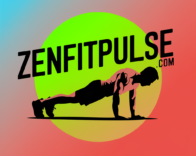
Yoga blocks are versatile and can deepen your stretch, help you find length in poses, support you on balancing positions among many others. They work best as a natural means of aiding people who experience back pain or stiffness due to gently supporting the body and aligning the spine in a breast tissue sparing manner.
This post we will look into back yoga block to help you release tension, reduce pain and improve your yoga practice. Included are a variety of poses to use with your b block, from beginner to an intermediate practitioner.
What is a Yoga Block?
Yoga Block A yoga block is a rectangular solid foam, wood, or cork. It becomes a prop in yoga poses, making it possible to change stretches and improve stability. Blocks vary in size and material, like the other props we are looking at today they are all pretty light weight so you don’t need to worry about needing a gym membership.
Yoga blocks and a mat are beneficial for those who have flexibility limitations or lose range of motion since they can aid in the connection between your body and the floor. This is particularly helpful for back-targeting poses, as it allows you to stretch deeper without overworking anything.
Benefits of Using a Yoga Block for Back
Support for Tight Muscles
Back (mainly the lower back due to hours of sitting or bad posture) Support and comfort, as it will cushion tight muscles so you can move deeper into a stretch/pose.
Alignment and Balance
Using a yoga block as a prop helps you to stay aligned, especially in balancing poses. This protects you from back strain by allowing you to stay in proper posture using the support of this block.
Increased Flexibility
So suppose that you have difficulty reaching the floor in certain postures — the yoga block is suitable to get the support, and not compromising too much on your flexibility (which is important obviously) but without over-stretching yourself and risking an injury.
Relief from Pain
Yoga blocks can also preventing you from lower back issues, herniated discs, sciatica or other kind of muscle imbalances.
5 Yoga Poses for Back Relief Using a Yoga Block

Pic By Ideogram
1. Double Bridge Pose — Setu Bandhasana
Release upper body and stretch spine, excellent for back pain.
How to do it:
Lay on your back with your knees bent and feet flat on the floor, hip width apart.
Position the yoga block under your sacrum (the flat part of your back above your tailbone).
Raise your hips off the floor, and place them on the block so that you’re evenly weighting it.
Rest in this position for 2-3 minutes taking deep breaths.
Benefits: Low back stretch, hip support and chest opener.
2. Fish pose (matsyasana) supported
Fish Pose — a beautiful chest and upper back stretch. Pro Tip: Use a block for extra support
How to do it:
Begin by sitting on the ground with your legs straight out in front of you.
It went the long way and with it just below my shoulder blades behind me.
Step 2: Kneel on the floor, setting two blocks in front of your mat at the highest height. Slowly lower your body onto one block (the small flat surface supports the head); let your head drop naturally toward the floor and drape arms to either side.
Extend your legs or slightly bend your knees, depending on what feels best.
Benefits: It stretches the chest and shoulders, relieving stiffness in upper back and neck.
3. Suptima Baddha Konasana (Reclined #Butterfly)
In this restorative pose, a yoga block helps to support back, opening up that spine and those hips for one heck of a stretch.
How to do it:
Knees slightly bent and fall out like butterfly wings, feet touching
Get a block to sit longways into your spine.
Sit on the block and lets your head and shoulders drop.
Hold here for 3-5 minutes, breathe.
Here are the benefits: Relieves a low back stretch as well as gently stretches hips and groin along with promoting relaxation.
4. Block Supported Child Pose (Balasana)
Childs Pose should be a relaxing forward bend that stretches the whole back, which block under your forehead to rest.
How to do it:
Begin in tabletop on your hands and knees.
Rest your torso and forehead on a yoga block that you have placed in front of you.
Either stretch your hands forward, or leave them on the body based on how much you are able to stretch.
Hold here for 2-3 minutes breathing deeply.
Best for: Lower back, hips and shoulders; restful
5. Sphinx Pose (Salamba Bhujangasana) — with a Block
Another easy way to back-bend and strengthen your lower back is Sphinx Pose. This will allow you to keep that posture neutral and reduce the load on your low back by using a block.
How to do it:
How to: Start in a high-plank position with your hands directly under your shoulders and legs long behind you.
Put a yoga block under the chest and use it for support with your forearm.
Keeping your elbows rooted, open your chest slightly off the mat.
Keep this pose for 1-2 mins and lengthen the spine.
Advantages: Helps to strengthen lower back and stretch the spine for looseness.

Additional Tips for Using a Yoga Block for Back Care
Ease in: If you are new to a yoga block, then start with easier poses and progressively increase the difficulty over time.
Listen to Your Body: if a pose feels awkward or sharp, discontinue and select a different option or reposition the block.
Practice Regularly: Add these yoga block exercises to practice and you will see the results over time.
Get Expert Advice: If you have chronic or underlying health issues, consult with a healthcare provider or yoga professional before trying out any of these poses.
FAQ
1. Will a yoga block cure chronic back pain?
That’s right, a yoga block can offer support and relief for people with chronic back pain. This assists in correcting the alignment of the spinal column, which is one of the main causes that produce back pain. Nevertheless, you should speak to a healthcare professional before starting any exercise if you have acute or enduring pain.
2. Which Material is good in back yoga blocks
Foam yoga blocks are used to support workouts and are softer than cork ones that offer cushioning- best suited for exercises related to the back. Cork and wood blocks provide more stability, making them for people who like a little more groundedness under their poses.
3. When doing posterior exercises, how often should I use a yoga block.
You can integrate the yoga block into your daily stretching or yoga routine. To progress in terms of flexibility, and pain relief one should have to perform the stretches consistently. Begin with 5 or 10 minutes per day and work your way up from there.
4. Yoga Blocks For Back Stretches — Can Beginners Even Use Them?
Absolutely! Yoga Blocks are Balancing Tools For Both New And Experienced Students It teaches new students how to move from their current position to an appropriate position.
5. Yoga block with herniated disc
Yoga blocks can be useful in reducing tension and helping you to stretch your back out, however if you have a herniated disk or another major spinal issue, it is fundamental that you seek medical advice. And a person can worsen the matter by performing some poses wrong way.
Conclusion
A yoga block-supported backstretch (and other poses) is how to relieve pain, become less stiff and build up a healthy strong spine. Adding these fundamental but effective postures to your personal yoga routine will both improve the overall health and function of the body, as well as ensure that you are also looking after your back in a healthy and supportive manner.
Enter these poses using a yoga block, the perfect tool to fight back against a long day of sitting or help you find added flexibility.
Discover more from zenfitpulse
Subscribe to get the latest posts sent to your email.

